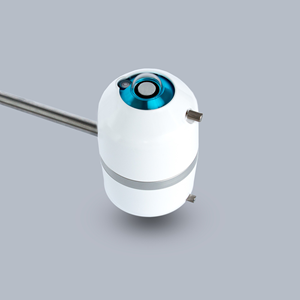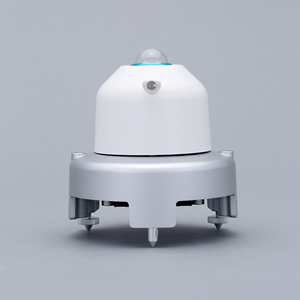Update to IEC 61724-1

What Do The Changes Mean For Your Irradiance Measurements?
The IEC standard 61724-1 for Photovoltaic system performance monitoring was revised in 2021. This is now the second edition of the standard, following the initial publication in 2017. There were multiple reasons for this revision, with much of the attention going to the rapidly changing PV technologies and the added importance of high-quality monitoring.
61724-1 covers all the required measurement parameters, from meteorological input parameters all the way to electrical power output parameters. However, we’ll just be looking at the irradiance parameters as those are the resource that drives the PV energy. We will also primarily look at Class A, the highest classification of monitoring systems.
MS-80 Pyranometer
The MS-80 set new industry standards on launch in 2016 and remains a class-leader for ISO9060:2018 Class A solar sensors today, one of the few Class A pyranometers in the top tier ‘fast-response and ‘spectrally flat’ sub-categories, with unprecedented low zero-offset behaviour, and a 5-year recalibration interval.

IEC 61724-1 systems follow similar classification conventions as ISO 9060:2018. Class A is the best level of performance with the lowest uncertainty, followed by Class B and Class C. Class A monitoring systems require Class A pyranometers. This has not changed from the first to second editions of the standard, but for the new 2nd edition of IEC 61724-1, the Class C monitoring classification was dropped completely. This decision, in effect, establishes the higher classification levels as the new minimum for proper PV performance monitoring.
Bifacial PV Monitoring Requirements
Bifacial PV modules have been booming in development and deployment over the last few years. 61724-1 did not initially include bifacial monitoring. Now, in the 2nd edition, the requirements are covered in detail. Global Horizontal Irradiance (GHI) and Plane of Array (POA) irradiance are still required, as expected with bifacial PV monitoring. But with the inclusion of the rear-side irradiance measurements. These rear-side irradiance measurements can be combined with either GHI or POA measurements to make for global rear side (Girear ) or in-plane rear-side irradiance (POArear
) or in-plane rear-side irradiance (POArear ) measurements, respectively. EKO has been utilizing a modular concept for our albedo measurements.
) measurements, respectively. EKO has been utilizing a modular concept for our albedo measurements.
This modular concept allows for user desired performance levels for both the up and down looking sensors. IEC 61724-1 provides for rear side irradiance measurements of Class C or better, while the up looking measurements must be Class A. This allows for an inexpensive combination of the EKO MS-60 and MS-80 pyranometers for down looking and up looking respective measurements.
Unlike EKO’s competitors, EKO’s modular design allows for easy sensor replacement in the field without replacing an entire albedometer system. In addition, the EKO 'S' series sensors have integrated tilt and roll sensors allowing users to match the irradiance measurement plane to the module plane accurately.
Heating & Ventilation
The previous edition of IEC 61724-1 required ventilation of the irradiance measurements. EKO easily accommodated this by combining the EKO pyranometers with the EKO MV-01 heated ventilator. The MV-01 is a low power heated ventilator that has been proven highly effective at removing ice and frost in the worst of conditions1.
61724-1 2nd edition allows for user discretion instead of mandating ventilation for all projects. From the NREL Best Practices Handbook for the Collection and Use of Solar Resource Data for Solar Energy Applications: Third Edition2, ventilators blowing external air across the pyranometer dome not only clear the dome of dew and frost but also reduce soiling of the pyranometer optics. This reduction in dome soiling is also key in maintaining the highest quality of irradiance measurements. If a project requires dew mitigation, the MV-01 can accomplish the task with heating and/or ventilation.
In summary, while IEC 61724-1 has been updated, EKO has remained ahead of the measurements needs of the PV industry. Whether a project is a commercial and industrial project in Canada or a quarter gigawatt utility project in the Middle East region, EKO has all the irradiance sensors and accessories to adhere to IEC 61724-1 or any other international standard. Each EKO pyranometer comes with ISO17025 accredited calibration as standard, and EKO is ready to support any project of any size.





















